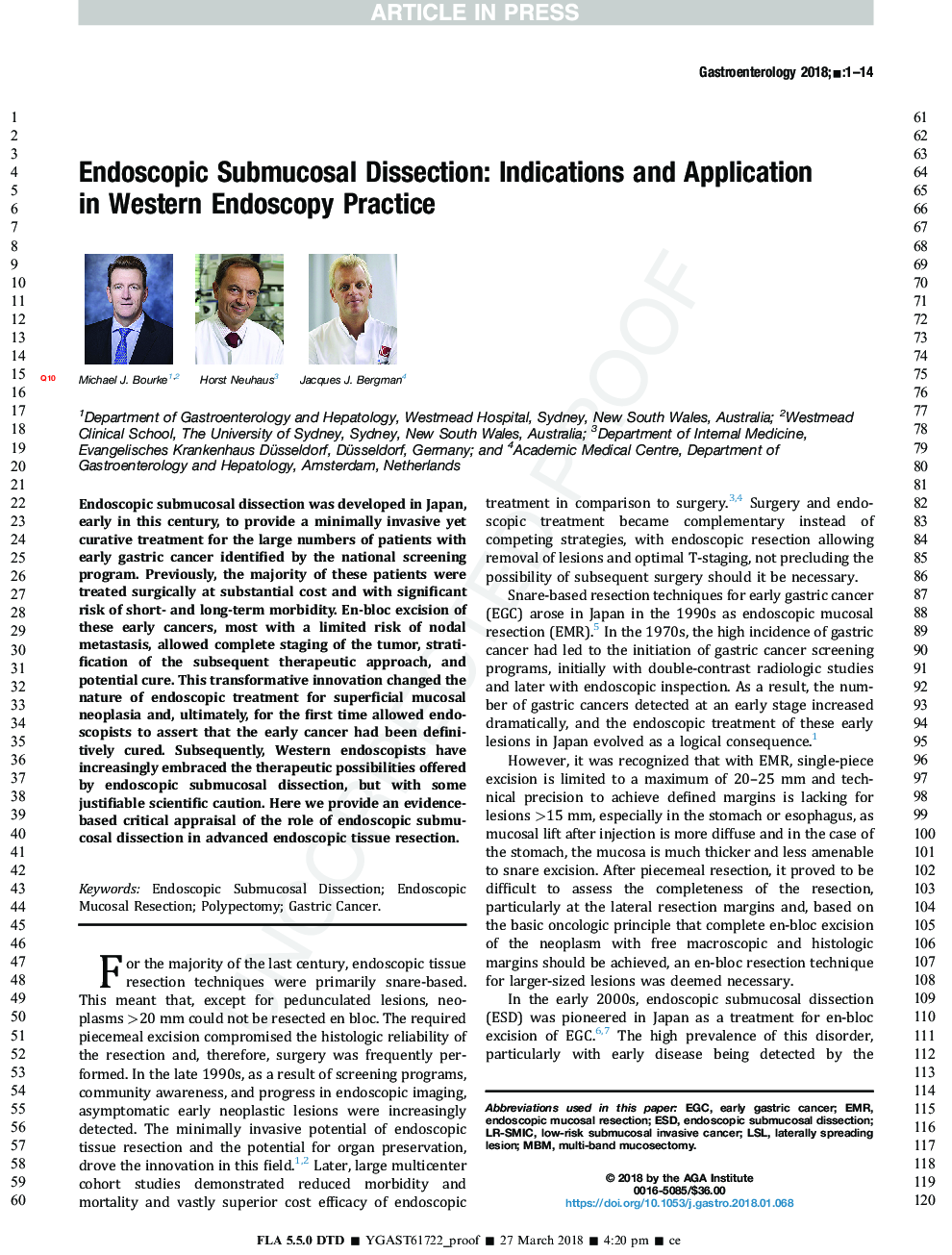| Article ID | Journal | Published Year | Pages | File Type |
|---|---|---|---|---|
| 8726539 | Gastroenterology | 2018 | 19 Pages |
Abstract
Endoscopic submucosal dissection was developed in Japan, early in this century, to provide a minimally invasive yet curative treatment for the large numbers of patients with early gastric cancer identified by the national screening program. Previously, the majority of these patients were treated surgically at substantial cost and with significant risk of short- and long-term morbidity. En-bloc excision of these early cancers, most with a limited risk of nodal metastasis, allowed complete staging of the tumor, stratification of the subsequent therapeutic approach, and potential cure. This transformative innovation changed the nature of endoscopic treatment for superficial mucosal neoplasia and, ultimately, for the first time allowed endoscopists to assert that the early cancer had been definitively cured. Subsequently, Western endoscopists have increasingly embraced the therapeutic possibilities offered by endoscopic submucosal dissection, but with some justifiable scientific caution. Here we provide an evidence-based critical appraisal of the role of endoscopic submucosal dissection in advanced endoscopic tissue resection.
Keywords
Related Topics
Health Sciences
Medicine and Dentistry
Gastroenterology
Authors
Michael J. Bourke, Horst Neuhaus, Jacques J. Bergman,
